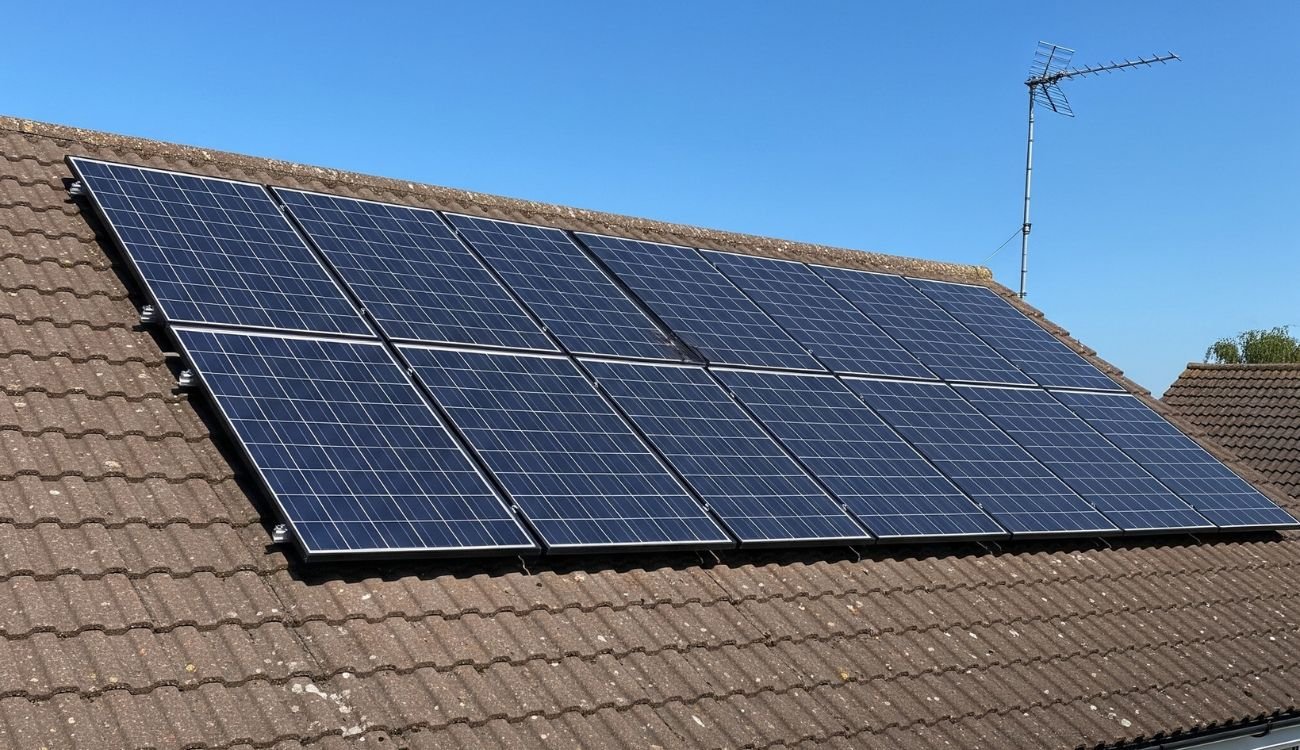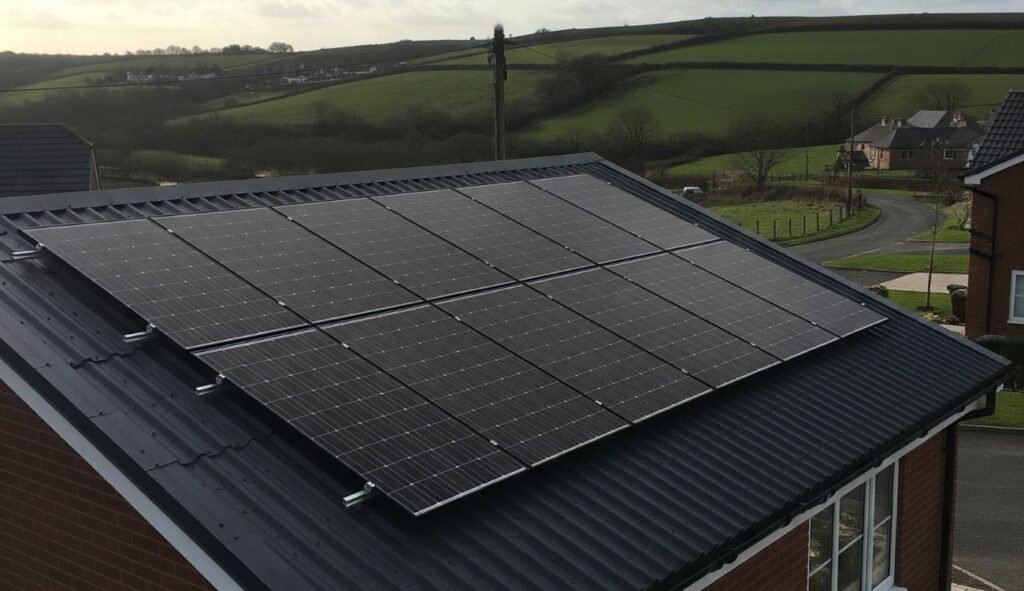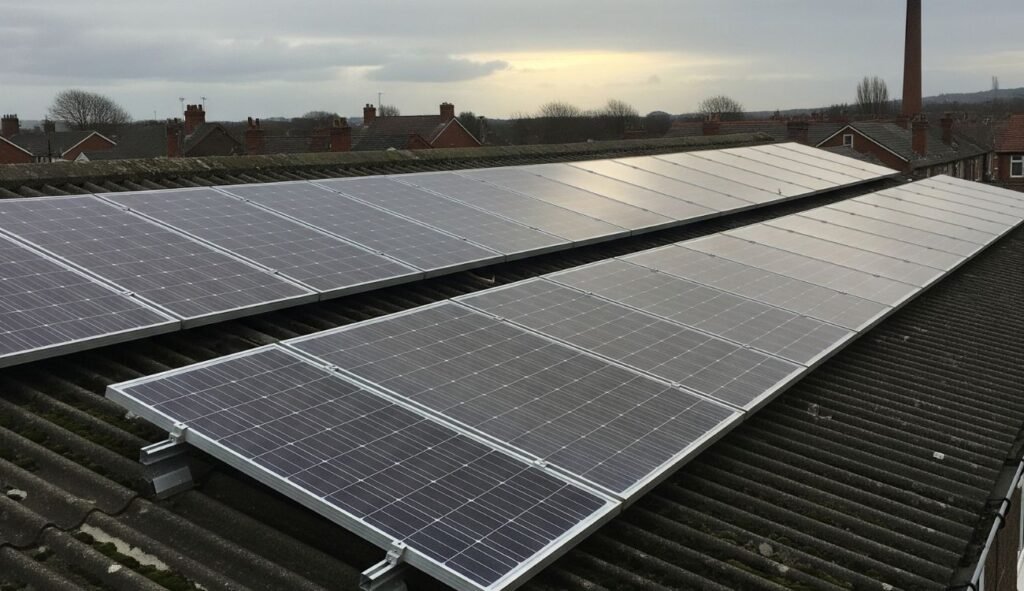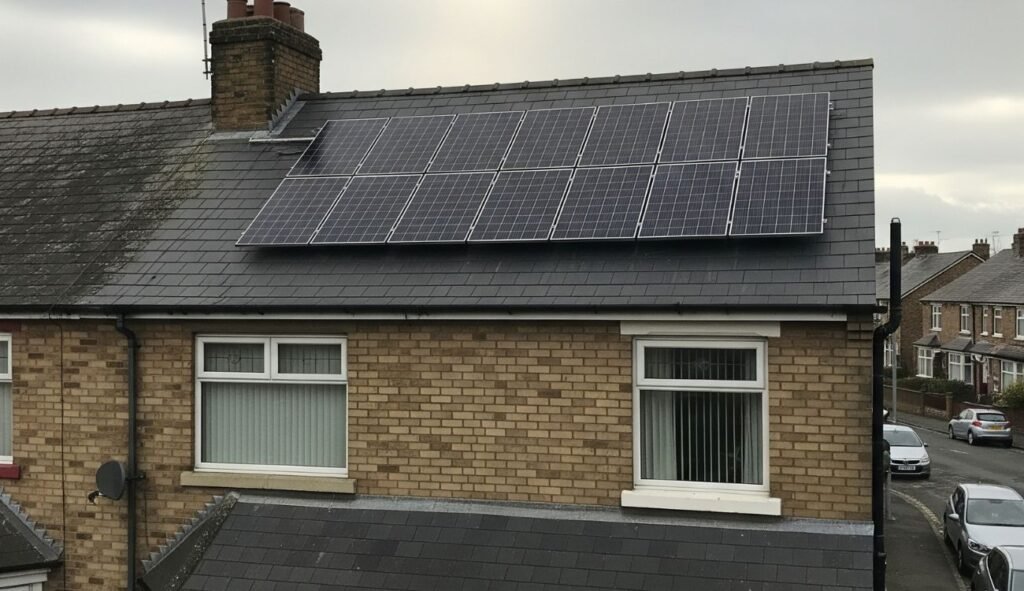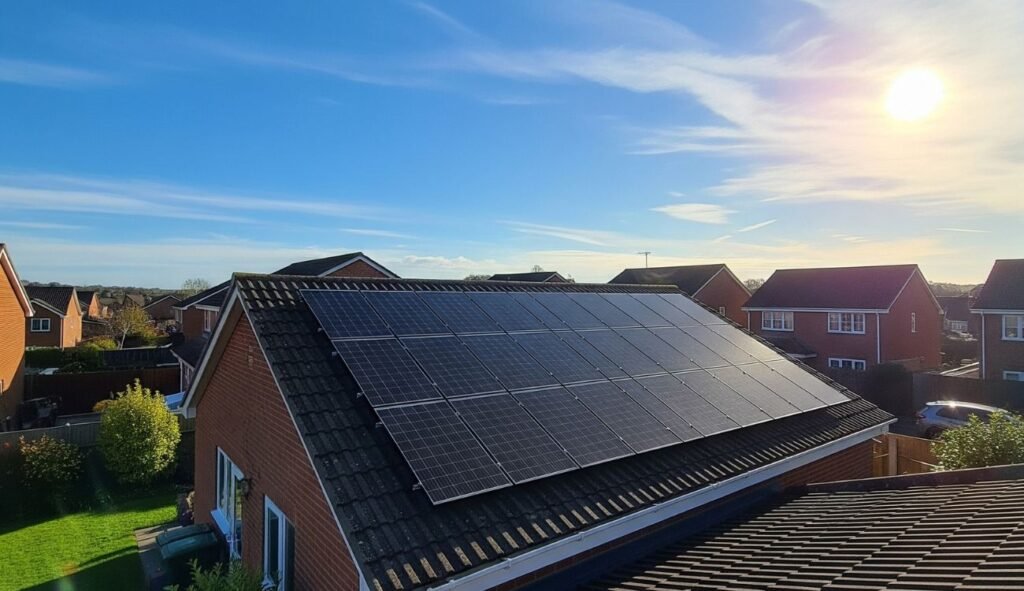Installing solar panels is one of the most effective ways for UK homeowners, landlords, and businesses to reduce energy bills and lower carbon emissions. But a common question people ask is: do solar panels need direct sunlight?
With the UK’s famously cloudy climate, especially in areas like Tyne and Wear and the wider North East, it’s a valid concern.
Below, we explore the impact of sunlight exposure on solar panel efficiency, debunk common myths, highlight regional and weather-specific considerations for North East England, and outline relevant government grants and incentives.
If you’re considering solar, Future Heat is your trusted solar installation expert for Newcastle and the North East. Reach out today to request a custom quote and learn how you can make the most of solar power, rain or shine.
Can Solar Panels Work Without Direct Sunlight?
The short answer is yes, solar panels can work without direct sunlight, although their efficiency is reduced.
Solar panels operate using photovoltaic (PV) cells, which convert visible light into electricity. This means they can generate power even on overcast days.
According to the Energy Saving Trust, solar PV systems can still produce around 10–25% of their optimal output under cloudy conditions.
In the North East of England, where cloudy skies are common, this is good news. Cities like Newcastle and Sunderland receive an average of 1,200 to 1,400 hours of sunshine per year, more than enough for solar panels to generate significant energy savings over time.
Insight: Our sales team is often asked, do solar panels work in winter in the UK? and the answer is yes, although output dips in shorter daylight hours, panels still contribute to your energy needs.
How Much Does Cloud Cover Impact Solar Panel Performance?
While direct sunlight yields the highest energy output, solar panels are designed to absorb a range of light wavelengths including diffuse sunlight.
A study by the Department for Business, Energy & Industrial Strategy (BEIS) found that even during dull winter months, solar power contributes steadily to the UK’s electricity grid.
This consistent performance is due to solar technology’s ability to convert ambient light, not just direct rays into electricity.
To optimise energy production in overcast conditions:
- Install panels at an angle that maximises exposure to southern sunlight.
- Keep panels clean and unshaded to boost performance.
- Opt for monocrystalline panels, known for superior low-light performance.
For a deeper comparison of panel types in these conditions, it’s worth understanding the difference between bifacial vs monofacial solar panels, as bifacial designs can also capture ambient light from below or nearby surfaces
Is Solar Worth It in the North East of England?
Absolutely. Despite the region’s reputation for grey skies, solar panels remain an excellent investment for residents and businesses in Tyne and Wear, Newcastle, Gateshead, and surrounding areas.
Here’s why:
- Solar irradiance levels in the North East average between 850–1,100 kWh/m²/year, sufficient to generate significant energy output.
- Rising electricity prices make solar energy more attractive than ever. If you’re wondering how long it takes for solar panels to pay for themselves, UK-specific payback times are getting shorter thanks to lower VAT and export tariffs.
- Local installers like Future Heat understand the unique weather and structural requirements of homes and businesses in the region, ensuring optimal system design and output.
Whether you’re a landlord looking to boost EPC ratings or a homeowner hoping to cut energy bills, investing in solar is a long-term win.
To make sure your system is set up for maximum return and minimal risk, it’s essential to know how to choose a solar panel installer who understands local regulations and roof types.
What Grants and Incentives Are Available for Solar Panel Installation in the UK?
To support the transition to renewable energy, the UK Government offers several grants and funding schemes:
Smart Export Guarantee (SEG)
The Smart Export Guarantee requires energy suppliers to pay homeowners for excess solar electricity exported to the grid. According to Ofgem, SEG tariffs vary by supplier, with some offering up to 15p per kWh exported (source).
ECO4 Scheme
Under the Energy Company Obligation (ECO4) scheme, eligible low-income households may receive funding for solar panel installation. The aim is to improve energy efficiency and reduce fuel poverty across the UK..
Zero VAT on Solar Panels
From 2022, VAT on solar panel installations has been reduced to 0% for residential properties, saving homeowners thousands on upfront costs.
Residents in the North East can benefit from these initiatives and reduce the payback period on solar systems significantly.
Tip: Timing your installation well can help you take full advantage of these benefits. Wondering when is the best time to install solar panels? Typically, spring and early summer offer the best conditions to start saving quickly.
How Can You Maximise Solar Output Without Direct Sunlight?
To ensure solar panels perform optimally year-round, especially during the UK’s darker months, consider the following:
1. Panel Type Matters
- Monocrystalline panels are ideal for low-light regions like the North East.
- Bifacial panels can absorb sunlight from both sides, useful in reflective areas like snowy or light-coloured surfaces.
2. Proper System Design
Proper system design can make or break your solar output, especially in cloudy regions. For best results, panels should be positioned south-facing to maximise sun exposure throughout the day.
Adjusting the tilt angle to suit the UK’s seasonal sun path improves energy capture year-round. It’s also important to avoid shading from chimneys, trees, or nearby buildings, as even partial shading can reduce performance significantly.
If you’re unsure how many solar panels can fit on your roof, a solar installer will assess available space, orientation, and pitch to determine capacity. In lower-light regions where every bit of sunlight counts, making the most of available roof area is especially important.
Elements like skylights, dormers, or chimneys can reduce usable space, but wall-mounted solar panels offer a smart workaround for properties with limited or awkward roof designs, helping you maximise energy capture even when direct sunlight is in short supply.
Beyond fit, the next big question is often how many solar panels you actually need. In areas with less direct sunlight, this becomes even more critical. Fewer peak sun hours mean you may need a larger system to generate the same amount of electricity.
Your ideal panel count depends on factors like average household usage, local solar irradiance, and whether you’re using battery storage to smooth out cloudy-day performance. Designing your system around these variables helps ensure it delivers reliable output year-round, even when direct sunlight is limited.
3. Battery Storage
Adding a solar battery allows you to store excess energy generated during the day for use at night or on gloomy days, further improving energy independence.
If you’re unsure what size solar battery you need to store extra power during darker days, it depends on your home’s usage patterns and typical daily energy output.
Is Solar a Good Investment for UK Landlords and Commercial Properties?
Yes. For landlords and commercial building owners, solar PV offers:
- Improved EPC ratings, meeting legal requirements for rentals.
- Lower operational costs, particularly for high-energy businesses.
- Increased property value and appeal to eco-conscious tenants.
Commercial solar projects in the North East can benefit from business rates exemptions, tax incentives, and carbon offset strategies, making them both eco-friendly and financially sound.
Frequently Asked Questions (FAQs)
Yes, solar panels still generate electricity during winter months. While output is lower due to shorter daylight hours, they can still contribute meaningfully to your energy needs, particularly with battery storage.
Yes. Dirt, dust, bird droppings, and debris can reduce panel efficiency. Regular cleaning, especially in autumn and spring ensures optimal light absorption.
Solar can still be viable on partially shaded roofs, especially if the system uses microinverters or power optimisers to limit the impact of shading on overall performance.
Yes. Ground-mounted solar, solar carports, and compact high-efficiency panels are ideal for properties with small or irregular roofs. You might also consider a solar panel pergola, a stylish and functional way to generate energy while shading your garden or patio.
Eligibility depends on household income, current EPC rating, and existing insulation.
Our Verdict
To answer the question, do solar panels need direct sunlight? no, they don’t. UK solar panels perform well under diffuse light, making them suitable even in cloudier regions like the North East of England.
With advancements in solar technology, generous government incentives, and increasing electricity costs, there has never been a better time to go solar. Whether you’re a homeowner, landlord, or business owner, solar offers real savings and long-term benefits.
Future Heat is proud to offer expert solar panel installation services across Newcastle, Tyne and Wear, Durham, Sunderland, and the wider North East. Our local team understands how to maximise performance, even in overcast conditions.
Myles Robinson is a seasoned expert in the boiler and home improvement industry, with over a decade of experience. He is deeply committed to environmental sustainability, actively promoting energy-efficient heating solutions to help households reduce their carbon footprint. By combining industry expertise with a dedication to environmental responsibility, Myles continues to lead efforts in transforming home heating practices towards a more sustainable future.

